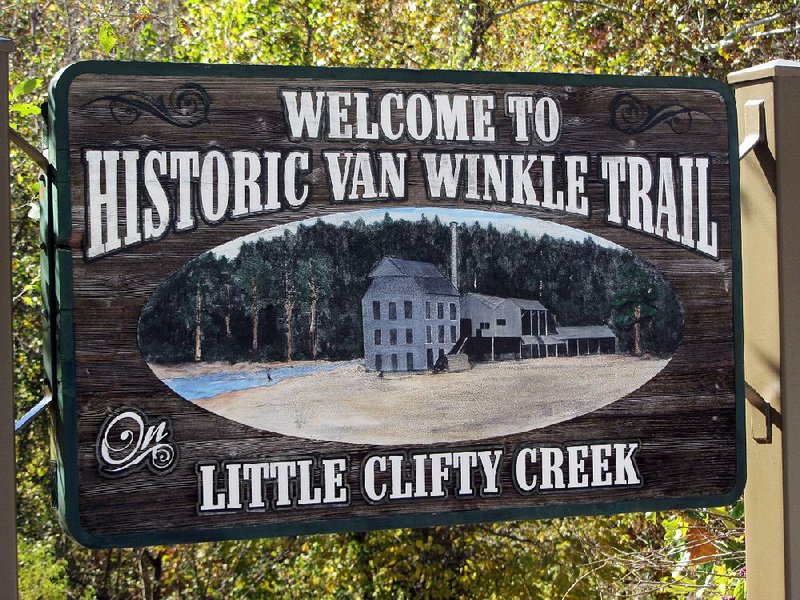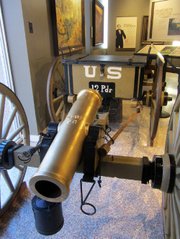Winter is off-season for most outdoors recreation at Arkansas state parks. But the Natural State's history remains a lively year-round focus at more than a dozen of the 52 facilities overseen by the Arkansas Department of Parks and Tourism.
Here's an assortment of state parks where varied facets of Arkansas' past are showcased at visitor centers, historic buildings and other displays:
• Arkansas Museum of Natural Resources. Towering derricks and other extraction gear evoke the southwest Arkansas oil bonanza that made Smackover a boom town in the 1920s. Indoor exhibits include the Earth Globe, providing a simulated passage through the planet's center, and Undersea Diorama, taking a trip back 200 million years to the Jurassic Period.
• Arkansas Post Museum. This site on the southern edge of Arkansas County offers visitors a look at the state's history dating back to Colonial times. A pioneer kitchen behind the main house gives the flavor of 19th-century cooking via displays of early utensils. A dog-trot cabin built in 1877 is furnished in the style of the post-Civil War era.
• Davidsonville Historic State Park. Arkansas' first courthouse and post office were located at this settlement, established in 1815 along the Black River in the foothills of the Ozarks. Traces of the village layout can be explored on the Historic Townsite Trail. The visitor center exhibits some of the myriad ceramics, tools, buttons and coins unearthed here by archaeologists.
• Historic Washington State Park. Guides in 19th-century attire give a personal touch to tours in this southwest Arkansas town, population now 180, that was large enough in 1860 to have 16 doctors and 17 lawyers. Among highlights is the original Hempstead County courthouse, built in 1836. It served as the state's Confederate capital in the last phases of the Civil War.
• Hobbs State Park-Conservation Area. Arkansas' largest state park, 10 miles east of Rogers, preserves the remains of Peter Van Winkle's lumber complex, home and slave quarters. In the 1870s, Arkansas' biggest steam-driven sawmill produced much of the lumber for Queen Anne-style houses still standing in Fayetteville, Bentonville and Eureka Springs.
• Jacksonport State Park. Centerpiece of this park near the meeting of the Black and White rivers is the stately brick courthouse dedicated in 1872 and resting on a foundation of Izard County limestone. The five-gallery museum in the courthouse tells the story of the town's 19th-century golden years as a steamboat port and its occupation by Union forces during the Civil War.
• Parkin Archeological State Park. On the St. Francis River in northeast Arkansas, Parkin is distinctive among the area's assorted American Indian sites because it has been protected against the ravages of farming and looting. As a visitor center exhibit explains, it is believed that this was the location of the Casqui village visited by Hernando de Soto's expedition in 1541.
• Plantation Agriculture Museum. The rigors of farming in the Natural State before mechanization arrived in the mid-20th century are manifest in portrayals of cotton picking by field hands and other onerous labor. A fascinating exhibit at the site in Scott focuses on the importance of mules back then -- "as necessary as the sun and rain," in one farmer's words.
• Powhatan Historic State Park. The 19th century's steamboat era was prime time for the Black River town of Powhatan in northeast Arkansas. Evidence of that long-ago prosperity is the handsomely restored brick courthouse, dating to 1888. Also on park grounds is a restored 1873 jail built of limestone, as well as the log Ficklin-Imboden House, an early example of domestic architecture.
• Prairie Grove Battlefield State Park. Rated as one of the nation's most intact Civil War battlefields, Prairie Grove witnessed a single day of fighting that brought 2,700 casualties on Dec. 7, 1862. The wooded Washington County location is the scene every other year of the state's largest Civil War re-enactment, next scheduled for the first weekend of December 2016.
• Toltec Mounds Archeological State Park. A degree of mystery envelops this grassy prehistoric site 15 miles southeast of North Little Rock. It is unknown why the complex, once surrounded by a 10-foot-high earthen embankment, was abandoned in the 12th century. The three remaining mounds include the tallest such American Indian structure in Arkansas, rising 49 feet.
More information on all of these sites is available at arkansasstateparks.com.
Weekend on 12/31/2015

